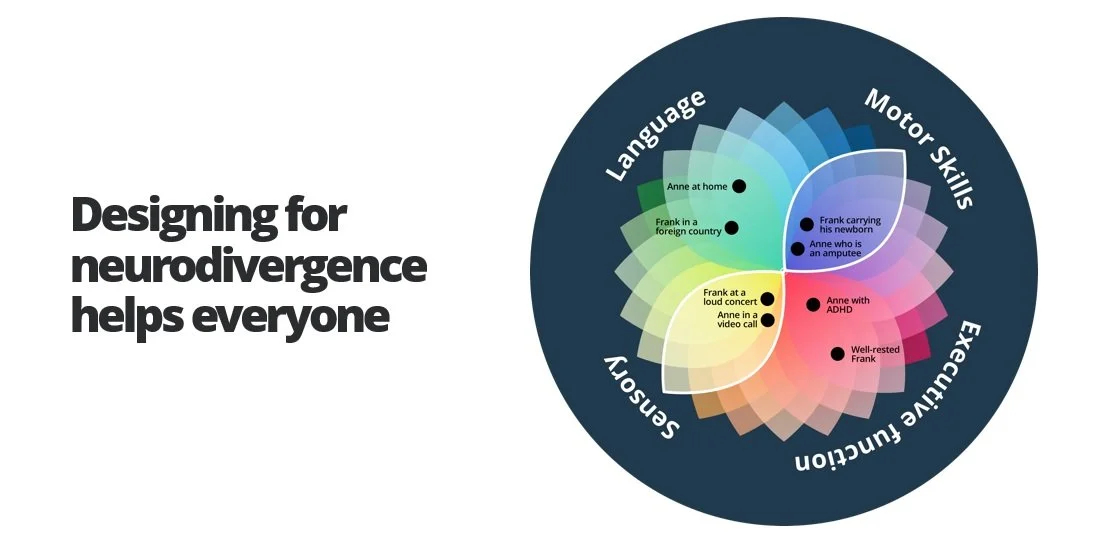Case Study
Neurodivergence at Work:
Researching Inclusion, Authenticity, & Health among Neurodivergent Employees
There is infinite variation in neurocognitive functioning among humans.
Our digital work tools and workplaces are designed to accommodate only a small segment of people on this spectrum of diversity.
Awareness and diagnosis of neurodivergent conditions is increasing, but neurodivergent individuals often still face challenges in the workplace - like being required to use tools that trigger sensory sensitivities or impede preferred ways to connect or communicate.
For many, the COVID-19 pandemic and the transition to hybrid and remote work has only increased reliance on exclusionary digital tools in the workplace.
Goal and Research Questions
Our client wanted to understand how their digital work tools could be designed to better meet employees’ specific needs and preferences and foster a sense of inclusivity and authenticity at work, with a focus on neurodivergent users.
How can digital work tools better support neurodivergent employees to do their best work?
How can digital work tools better support neurodivergent employees’ mental and physical health?
How can digital work tools better support neurodivergent employees to feel included and connected with colleagues?
How can digital work tools better support neurodivergent employees to express their authentic selves at work?
Our Approach
Background Research
Literature review and subject matter expert interviews to deeply understand the populations that we would be studying, appropriate language and terminology to use, and techniques to accommodate participants throughout the research process.
One-week Diary Study
Online diary collection to capture employee experiences in detail and over time and explore conceptualizations of inclusivity, authenticity, and connection in the workplace.
Diary tools allowed for participants to choose input types (written or verbal) to accommodate their needs and preferences.
Remote IDIs
Hour-long interviews conducted with a subset of diary participants.
The interviews further explored ways in which neurodivergence factors into participants’ work lives, social, emotional, and physical impacts of using existing work tools, and how digital communication tools could be better designed for their needs and preferences.
USA & Brazil
N=50 Diaries & N=25 IDIs
Participants were diagnosed with a range of neurodiverse conditions, worked in varying work situations from fully remote to fully in-person, at a mix of companies, from SMBs to enterprise.
10 weeks
Markets
Participants
Timeline
Insights
Identified primary areas in which neurodivergence impacts work
Specific needs among remote and hybrid neurodivergent employees
Design principles to support employee health and comfort, work performance, meaningful connections, inclusivity, and authenticity, prioritized to help guide the development of our client’s digital work tools
Impact
Insights delivered to multiple teams developing new products and features.
Also utilized internally by HR and IT departments at the client organization.
Insights integrated into the client’s existing conceptual model for user needs.
Final report out viewed over 1,000+ times at client organization.



